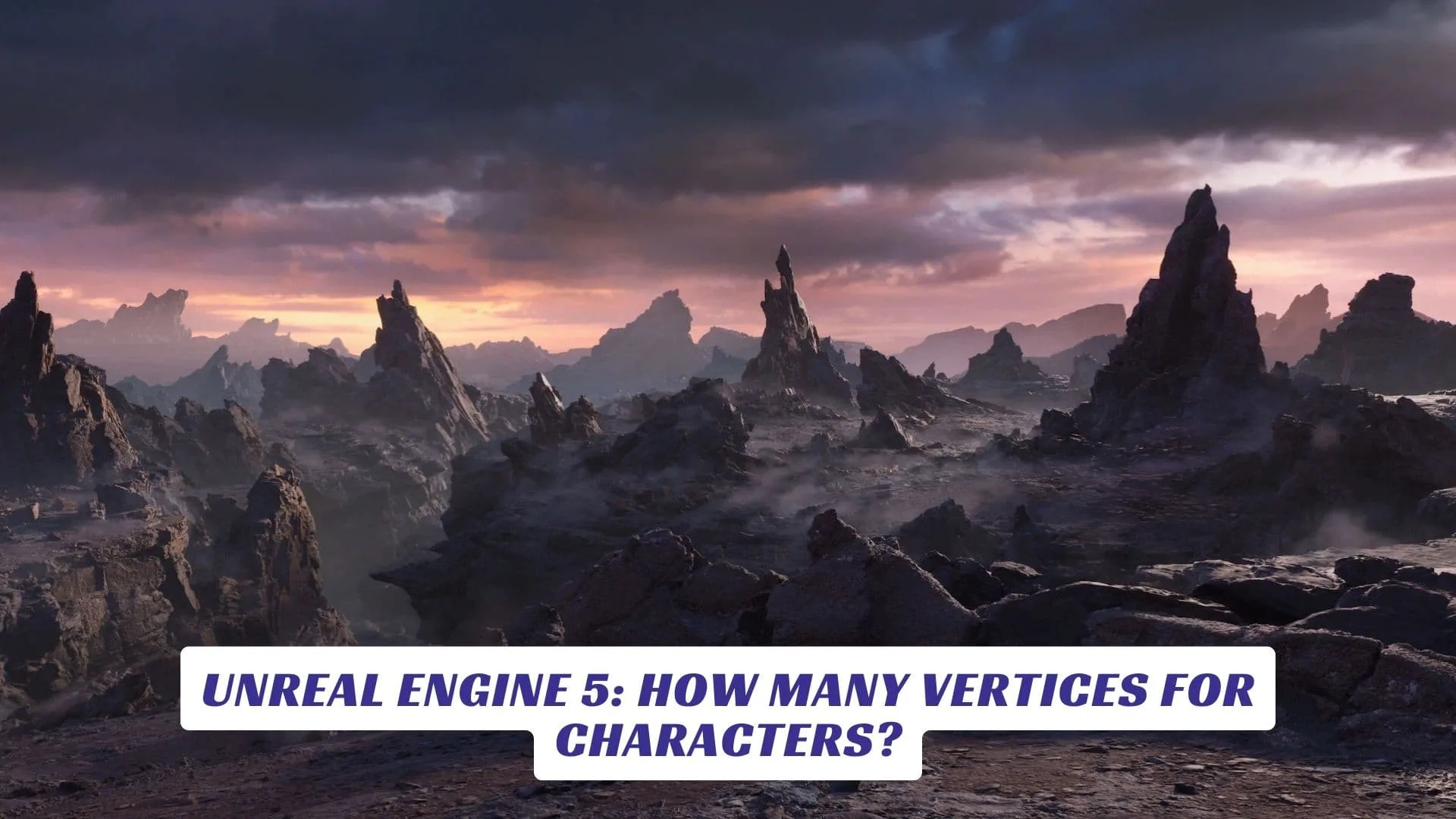Contents
When developing visually impressive games, one of the most common questions is: Unreal Engine 5 how many vertices for characters? As game developers push the boundaries of realism and detail, understanding the ideal vertex count for character models in Unreal Engine 5 is crucial. This article explores how many vertices you should use for characters in UE5, balancing graphical fidelity with performance, and leveraging the engine’s latest features like Nanite and advanced LODs. We’ll cover recommended vertex counts, technical limitations, and best practices for both high-end and optimized projects, ensuring your characters look great and run smoothly across platforms.
Why Vertex Count Matters in Unreal Engine 5
Vertices are the building blocks of 3D models, defining the structure and detail of your character meshes. In Unreal Engine 5, the number of vertices directly impacts rendering performance, animation smoothness, and memory usage. With UE5’s advanced rendering pipeline and features like Nanite, artists can achieve higher detail than ever before, but it’s still important to find the right balance, especially if your game targets a wide range of hardware.
Typical Vertex Counts for Characters in Unreal Engine 5
- UE5 Mannequin Reference: The default Unreal Engine 5 mannequin character has about 90,000 to 100,000 vertices, which serves as a solid benchmark for modern, detailed characters.
- Previous Generations: In Unreal Engine 4, template characters typically featured 40,000 to 50,000 vertices.
- Industry Examples: Last-generation AAA games often used 25,000 to 30,000 vertices for main characters, while current-gen projects may push 100,000 to 150,000 for hero characters, especially with high-quality LODs and advanced shaders.
- Low-Poly and Stylized Games: For stylized or mobile titles, character vertex counts can range from as low as 1,500 up to 20,000, depending on the desired look and hardware constraints.
Maximum Vertex Limits and Technical Considerations
- Engine and Hardware Limits: Most modern hardware and Unreal Engine 5 itself can comfortably handle character meshes with tens of thousands of vertices. However, certain APIs and platforms may impose limits-typically 32,767 or 65,535 vertices per mesh, especially for mobile devices due to 16-bit index buffer constraints.
- Mobile Games: For mobile platforms, the practical vertex limit is around 65,000 per mesh, and it’s wise to stay well below this for optimal performance.
- Skeletal Meshes: UE5 supports complex skeletal meshes, but performance is also influenced by the number of bones and morph targets, not just pure vertex count.
Nanite and High-Detail Characters
With the introduction of Nanite, Unreal Engine 5 allows for unprecedented geometric detail, even supporting millions of triangles for static meshes and, as of recent updates, for skeletal meshes as well3. However, using extremely high vertex counts (hundreds of thousands or more) is typically reserved for hero assets or cutscene characters, and should be paired with robust LOD (Level of Detail) systems to maintain performance.
Level of Detail (LOD) Strategies
- LOD0 (Highest Detail): Main playable or cinematic characters may use 90k–150k vertices.
- LOD1/LOD2: As the character moves further from the camera, reduce vertex counts aggressively (e.g., 25k, 10k, 5k) to save resources.
- Automatic LOD Generation: Unreal Engine 5 and DCC tools like Maya or Blender can generate LODs automatically, allowing you to fine-tune the reduction settings for each level.
Best Practices for Character Vertices in Unreal Engine 5
- Match Vertex Count to Role: Use higher vertex counts for main characters and lower for background NPCs.
- Optimize for Platform: Target lower counts for mobile and VR, higher for PC and next-gen consoles.
- Use LODs: Always implement multiple LODs to optimize performance at varying distances.
- Test and Profile: Regularly benchmark your game to ensure performance targets are met, especially if you plan to have many characters on screen at once.
Conclusion
In Unreal Engine 5, the recommended vertex count for characters varies by project scope and target hardware:
- Hero Characters: 90,000–150,000 vertices (or more with Nanite for cinematic detail).
- Standard Playable Characters: 40,000–100,000 vertices.
- Background NPCs: 10,000–30,000 vertices.
- Mobile Games: Stay under 65,000 vertices per mesh.
With UE5’s powerful rendering capabilities, you have more flexibility than ever, but thoughtful optimization and LOD management remain essential for smooth, visually impressive games.
